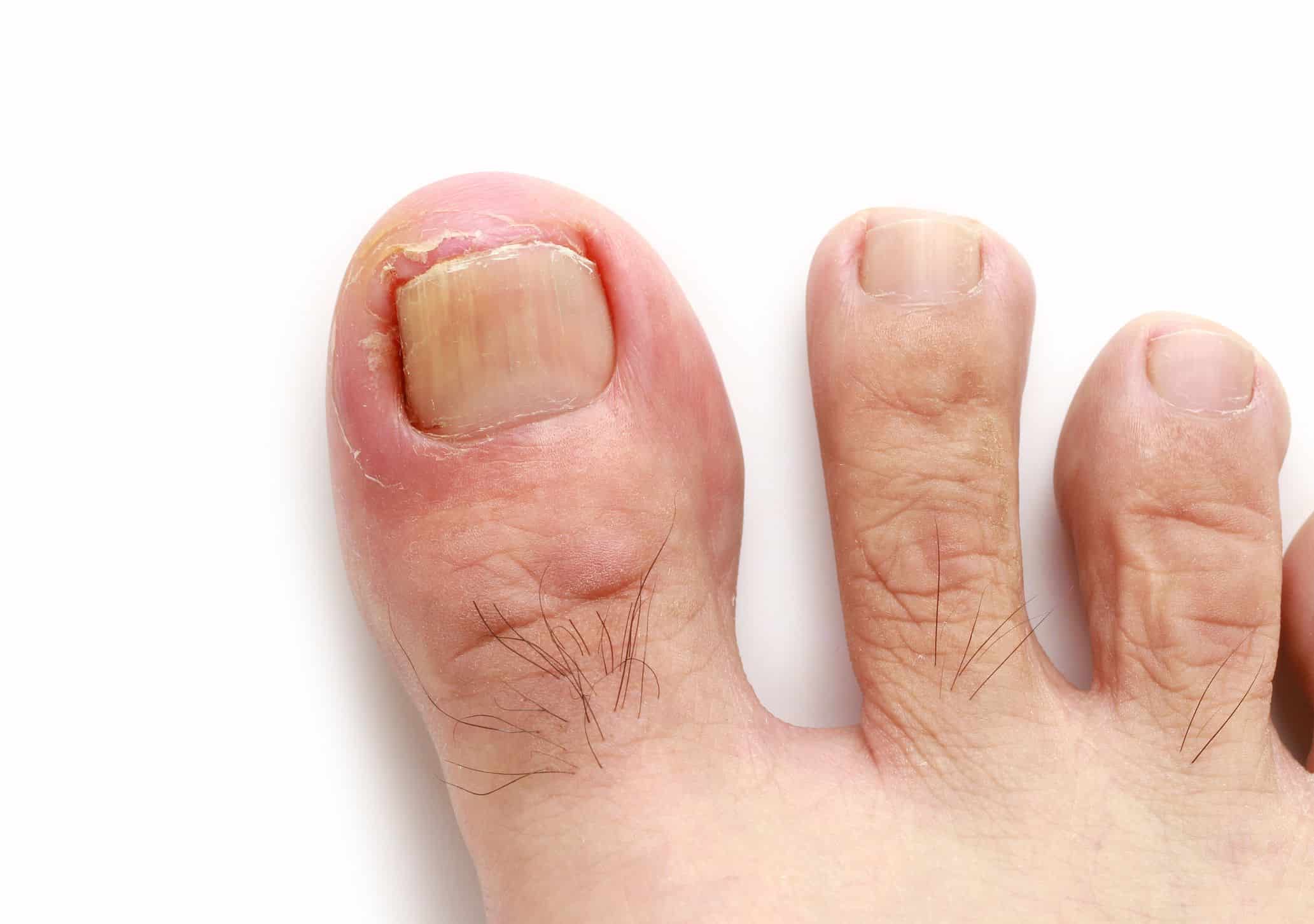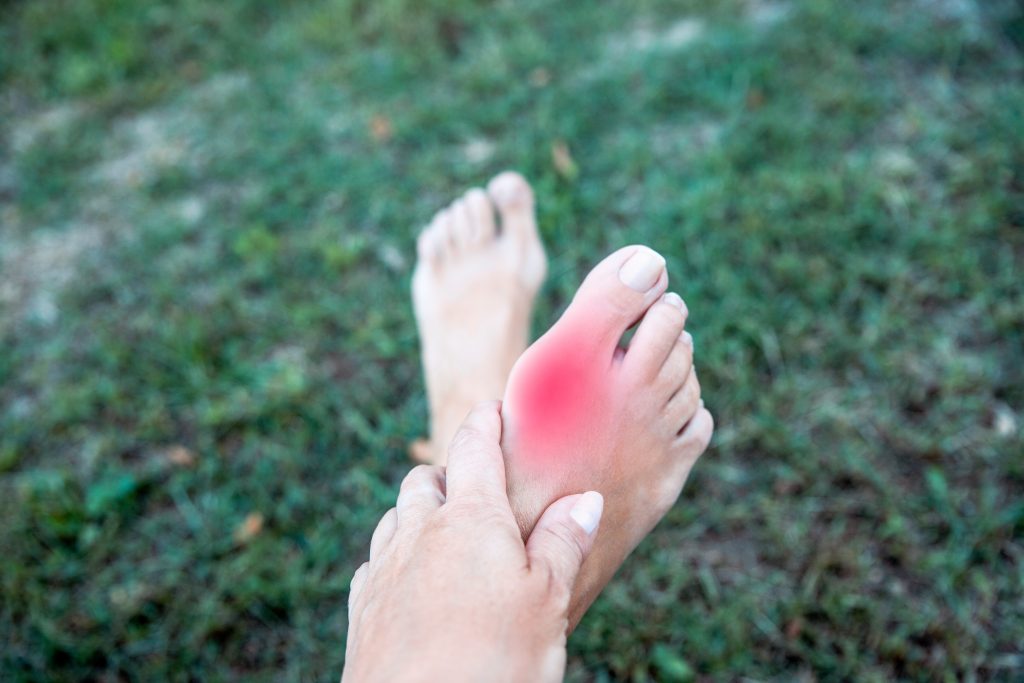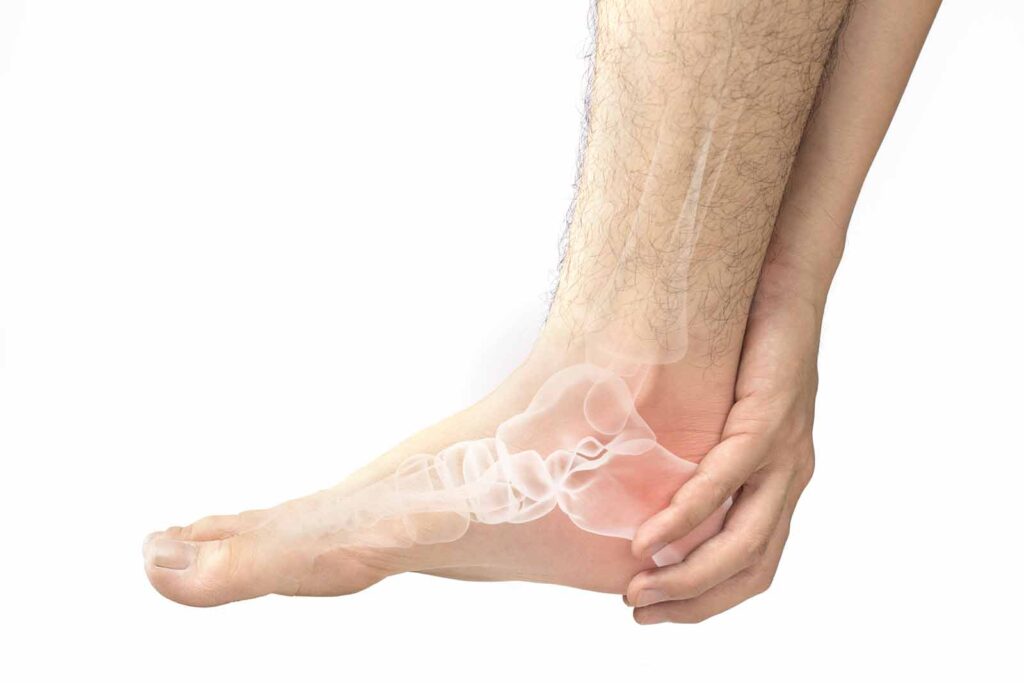WHAT ARE FOOT PROBLEMS?
Foot problems could be caused from injuries to inflammation. There are several different types of damage and malfunctions that can lead to foot problems.
The foot is at high risk of injury in comparison to other parts of the body due to stress of carrying you around. Many of the foot problems, including hammertoes, blisters, bunions, corns and calluses, claw and mallet toes, ingrown toenails, toenail fungus, and athlete’s foot, might develop from neglecting them, ill-fitting shoes, and simple wear & tear.
The human foot contains 26 bones, 33 joints, and approximately 100 muscles, ligaments, and tendons. It is made-up of strong fibrous tissues to keep all the moving parts together. Foot usually contains more sweat glands than any other part of the body.
The foot is the most evolved part of the human body which is capable of handling tons of force like your weight in motion every day. The feet include the toes, heel, and ball that work together to get you from one place to another.

Foot gives warnings before start of any problem such as:
- Cold feet and toes: This might lead to possible medical issues such as vascular disorders due to familial tendencies, diabetes, smoking and other factors, peripheral artery disorder (PAD) or circulation problems due to diabetes. The cold feet is caused from restricted blood flow or poor blood circulation which might be caused from frequent high blood sugar levels narrowing the arteries and reducing blood supply to tissues.
- Burning Pain: This might indicate possible medical issues like neuropathy, peripheral artery disorder (PAD), peripheral neuropathy caused due to diabetes or other factors. The burning pain in feet is a result of nerve damage in the legs known as neuropathy and inflammation of the feet, like athlete’s foot. Those suffering with PAD could also cause burning pain in the feet.
- Sudden swollen and painful big toe and foot: Possible medical issues caused due to swelling and pain in toe and foot include gout, cellulitis infection, neuropathic arthropathy or Charcot joint, possible deep vein thrombosis, or systemic arthritis, like rheumatoid or psoriatic arthritis.
- Discolored or deformed toenails: These might lead to possible issues such as nail fungus, overuse or micro-trauma injury (common in bowling, tennis, hiking, running), psoriasis, anemia, immune-suppression from chemotherapy and melanoma.
- Sore or ulcer: Some sores and ulcers which don’t heal could cause diabetic foot ulcer or ankle ulcer resulting from venous insufficiency, peripheral neuropathy, basal cell or squamous cell carcinoma, malignant melanoma, PAD.
- Dark line or bruise under your toenail: It might cause melanoma which is a rare condition or subungual hematoma. It could be caused due to an injury or trauma to the nail.
- Weight-bearing pain in the foot with no trauma: This would cause stress fracture, plantar fasciitis, tendinitis, arthritis and diabetic arthropathy. Millions of Americans visit podiatrists for foot and ankle issues every year.
- Numbness or tingling in feet and toes: This could be a symbol of serious problems such as peripheral neuropathy, b12 deficiency, spinal stenosis, and other neurological conditions, diabetes and chemotherapy.

WHAT ARE COMMON MEDICAL FOOT CONDITIONS?
This article provides detail about common foot problems along with their causes, and when to seek treatment.
1. Athlete’s foot or tinea pedis: It is a fungal infection of the skin found between the toes. The fungus usually dwells in warm, dark and moist environments. The infection spreads and causes discomfort, itching, and pain.
- Causes: You are most likely to be exposed to fungal infection in a gym, shower, wearing warm & damp shoes or a pool where people walk around barefoot. Fungus usually thrives in warm and damp areas. Fungal infection is highly contagious and it can spread to other areas of the skin, including the hands, groin, and scalp.
- Symptoms: Main symptoms are itching, cracking, blistering, and peeling of the feet. The infection usually starts with 4th and 5th toes and then spreads. In severe conditions you might also develop cracks in the heels or skin of the toes.
2. Bunions or hallux valgus: These are abnormalities of the feet leading to development of bump on the large toe joint. This might lead the big toe to turn slightly inward. Women are prone to develop bunions due to increased pressures from narrow footwear.
- Causes: Usually caused by wearing tight or narrow shoes as tight shoes put pressure on the metatarsophalangeal joint (MTP). The bone of the foot meets the bone of the big toe at the metatarsophalangeal joint. It is hereditary in nature and runs in the family. It can also develop due to underlying medical conditions including rheumatoid arthritis or polio.
- Symptoms: If you are suffering from bunions you are more likely to experience the following.
Visible bump on the side of the foot
Tenderness on or around the big toe
Callus or corn on the bone below the big toe
Difficulty moving the big toe
Pain in the big toe while walking

3. Diabetic Neuropathy: Diabetes damages the nerves of the foot especially during fluctuations in blood sugar. Diabetic neuropathy is a group of conditions affecting the foot.
- Causes: High blood sugar levels over a period of time would damage the nerves, especially those in the feet.
- Symptoms: People with diabetes experience symptoms such as numbness, tingling, and pain in the feet.
4. Ingrown Toenails: It is caused when the toenail starts to grow into the nail groove. This could cause significant pain and discomfort.
- Causes: The main cause of ingrown toenails is wearing badly-fitting shoes that puts pressure from shoes that are too narrow at the top or too tight. Other causes include toenails which are not properly trimmed like cutting the toenails short or trauma to the feet due to activity including running. Having a family history might also increase a person’s risk.
- Symptoms: Ingrown nails cause redness, swelling, pain, or even drainage from the toenail. This indicates the presence of an infection.
5. Plantar fasciitis: It is the most common cause of heel pain. The condition occurs due to inflamed plantar fascia on the bottom of the foot. This ligament helps in supporting the foot’s arch.
- Causes: The exact cause for the same is not clearly known hence it is also referred to as idiopathic plantar fasciitis. You would be at high risk due to being obese, having a very high arch, having tight calf muscles, and participating in activities causing repeated stress to the heel, like running.
- Symptoms: You would experience pain on the bottom of the heel. This pain is usually worse in the morning while getting out of bed. The pain would worsen with activity.
6. Blisters: These are caused after walking, running for long periods of time, feet becoming sweaty or when wearing shoes that do not fit correctly. Blisters are raised and fluid-filled pockets that are not generally a serious concern.
7. Corns: These are patches of thickened skin mostly found on the soles of the feet or toes. Corns are normally painless. The affected areas form to protect the skin and stop the body from developing blisters. These could be caused by bunions, hammer toe, or ill-fitting shoes.
8. Stone Bruise or metatarsalgia: These appear due to high-impact exercises or poor-fitting shoes. They could be a sign of an underlying medical condition.
OUTLOOK
You might require a frequent visit to a podiatrist for various foot problems including gout, flat foot, morton’s neuroma, sesamoiditis, mallet or hammer toe and many more.
If you or anyone you know is suffering from foot problems, our expert providers at Specialty Care Clinics will take care of your health and help you recover.
Call us on (469) 545-9983 to book an appointment with our specialists.
